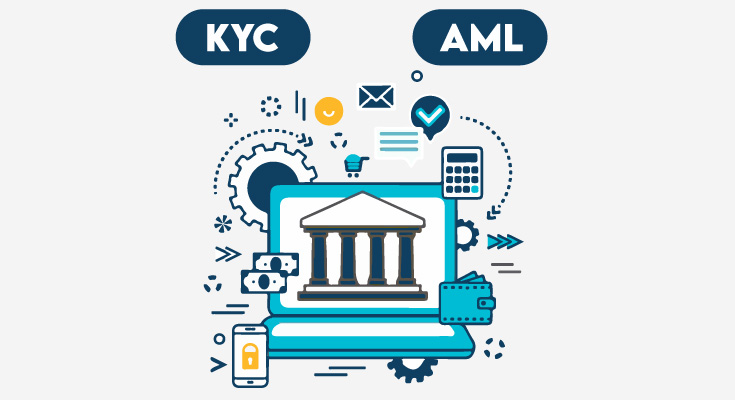Regulatory compliance is the biggest challenge for most financial institutions as it keeps changing. Financial services must have regulations that minimize the risks of customers engaging in illicit financial activities such as money laundering. Every financial institution is aware that collecting and leveraging financial data is costly. The time taken to onboarding customers tends to be lengthy and most customers leave the KYC compliance process in between. Businesses operating in the financial industry are finding it hard to access financial products due to the extensive information it requires.
Compliance costs are increasing annually due to the constant changes in the KYC and AML regulations which is vital to reduce the risk of financial crimes. According to a report, major financial institutions spend up to $500 million annually to stay compliant with KYC and AML regulations. Open banking can help in reducing compliance costs by streamlining the onboarding process by leveraging customer data to mitigate risks. The use cases of Open Banking can include retrieving information about the customer and the institution onboard. With open banking, the basic data such as name, DOB, country of residence, and address can be accessed easily. Without open banking APIs, a huge series of information won’t be available to banks such as a source of wealth, transactional data, and other sources of information.
Although open banking is a helping guide to traditional banking compliance teams instead of a substitute for them, many onboarding and AML decisions will continue to rely on financial institutions’ judgment and risk factors.
Open Banking and KYC
KYC is a due diligence process that financial institutions need to follow during the initial relationship with clients. In its entirety, KYC and background checks help banks and other institutions determine if the person is who he/she claims to be and if they are involved in some illegal activity.
Depending on the financial service that’s being offered to the customer, the level of due diligence and the amount of risk faced by businesses change. There are three levels of KYC verification and all of them have the same objective. The only major difference is the amount of information that has to be collected from the customers.
- Simplified Due Diligence: This level of due diligence is applied to customers with the lowest level of financial risk. The information required to complete this is basic such as name, surname, and date of birth. In the EU, each state is allowed to make up its policies regarding data collection and they have to apply the guidelines offered by regulators.
- Ordinary Due Diligence: This level of due diligence is applied to low to medium-risk customers. Medium risk customers can be businesses that offer financial services of their own as insurance and credit services. Ordinary due diligence requires more data compared to simplified due diligence such as the location of the business and customers, source of income, and national insurance number (if required).
- Enhanced Due Diligence: This is the strictest due diligence that’s applied while onboarding high-risk customers. High-risk customers can be businesses that deal in financial services, politically exposed persons, persons on sanction lists, and businesses that operate in high-risk countries such as the Cayman Islands.
In the current regulatory landscape, there is no fixed information that’s required by banks or regulators. A common or centralized digital ID verification method is required for banks and other financial institutions to reduce the risk of financial fraud while offering a seamless customer onboarding experience. While this is almost impossible to achieve, the ideal thing to do is a partner with FinTechs that can offer seamless online document verification software, online KYC verification software, and other solutions that can mitigate risks and improve customer onboarding.
Open Banking and AML
In the current environment, banks have a limited view of what their customers are up to. The information available is limited to the information that firms can collect from clients or public data sources. It also means that to comply with AML regulations and to monitor transactions, banks and regulators have to rely on information that comes from unreliable sources.
With the widespread implementation of open banking and open banking APIs, this situation can be easily solved. As open banking relies completely on data sharing among banks and third-party service providers, collecting trustworthy data to onboard and monitor customers becomes seamless. By embracing open banking APIs, banks can access data from a trusted entity about any particular client, thus making KYC and AML compliance easier.
Instead of accessing only a fraction of customer financial data, firms would be able to gain a broader view of the entities they’re doing business with. This would make banks and financial institutions better at detecting fraudulent behavior and patterns in a customer’s transaction history.
This is why digital transformation is crucial in the financial industry. Being able to access data will allow a standalone financial service provider to provide customized services to customers. Tedious and risky processes like lending and assessing creditworthiness will also become easier. Open Banking APIs will allow firms to collect quality data about customers and businesses which will not only help them but other businesses and service providers in the industry.
Conclusion: Open Banking and Regulatory Compliance
To summarize, Open Banking opens new doors for banks and other businesses operating in the financial landscape by allowing them to access more data. More customer data means a better assessment of customer behavior and the risk level a customer poses. Widespread use of open banking APIs will also boost innovation in the industry, as the third-party service provider will try to offer customized services to the customers.





